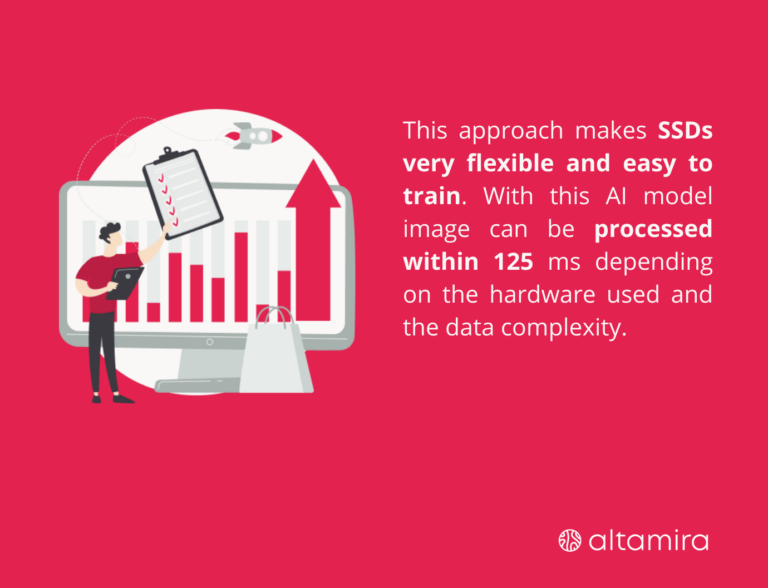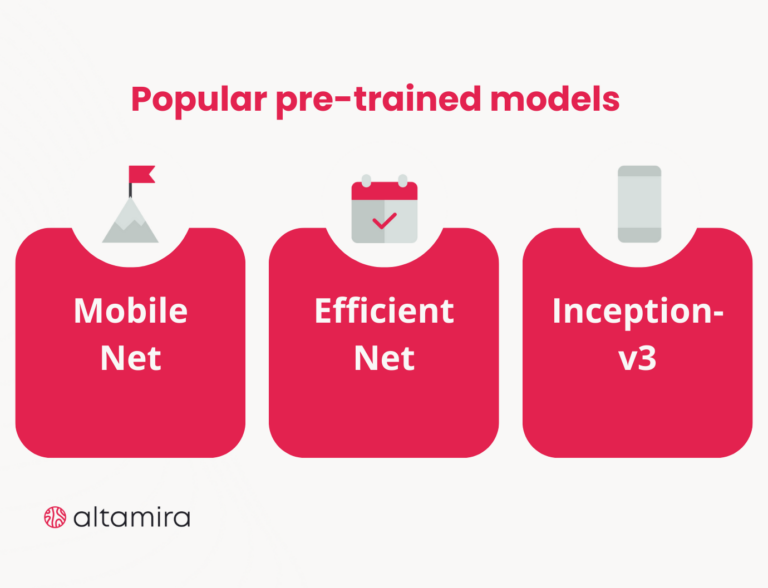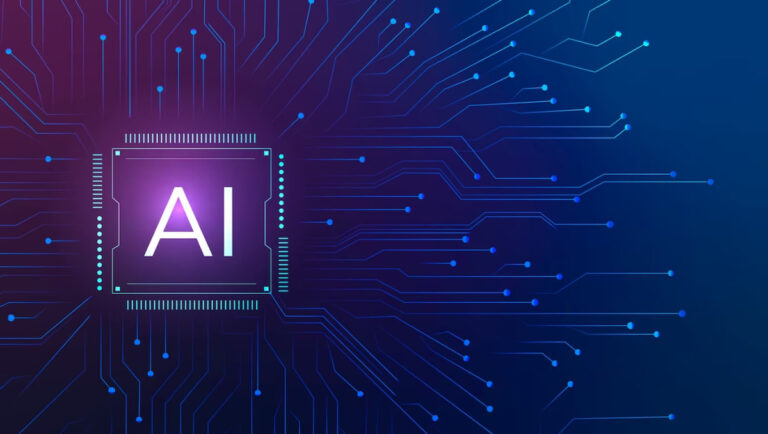Table of Contents
The human brain has a unique ability to immediately identify and differentiate items within a visual scene. Take, for example, the ease with which we can tell apart a photograph of a bear from a bicycle in the blink of an eye. When machines begin to replicate this capability, they approach ever closer to what we consider true artificial intelligence.
Computer vision aims to emulate human visual processing ability, and it’s a field where we’ve seen considerable breakthrough that pushes the envelope. Today’s machines can recognize diverse images, pinpoint objects and facial features, and even generate pictures of people who’ve never existed.
It’s hard to believe, right? In this regard, image recognition technology opens the door to more complex discoveries. Let’s explore the list of AI models along with other ML algorithms highlighting their capabilities and the various applications they’re being used for.
ML and AI models for image recognition
One can’t agree less that people are flooding apps, social media, and websites with a deluge of image data. For example, over 50 billion images have been uploaded to Instagram since its launch. This explosion of digital content provides a treasure trove for all industries looking to improve and innovate their services.
Image recognition technology enables computers to pinpoint objects, individuals, landmarks, and other elements within pictures. This niche within computer vision specializes in detecting patterns and consistencies across visual data, interpreting pixel configurations in images to categorize them accordingly.
Given that this data is highly complex, it is translated into numerical and symbolic forms, ultimately informing decision-making processes. Every AI/ML model for image recognition is trained and converged, so the training accuracy needs to be guaranteed.
Convolutional neural networks (CNNs) in image recognition
CNNs are deep neural networks that process structured array data such as images. CNNs are designed to adaptively learn spatial hierarchies of features from input images.
During training, a CNN learns the values of the filters and weights through a backpropagation algorithm, adjusting them to recognize patterns and features in images, such as edges, textures, or object parts, which then contribute to recognizing the whole object within the image.
By stacking multiple convolutional, activation, and pooling layers, CNNs can learn a hierarchy of increasingly complex features.
Lower layers might learn to detect colors and edges, intermediate layers could learn to detect more complex structures like eyes or wheels, and deeper layers can detect high-level features like faces or entire objects, which is critical for image recognition tasks.
Overview of popular image recognition algorithms
A few image recognition algorithms are a cut above the rest. All of them refer to deep learning algorithms, however, their approach toward recognizing different classes of objects differs.
Faster Region-based CNN (Region-based Convolutional Neural Network) is the star in the R-CNN cluster considered as the best among machine learning models for image classification tasks.
It leverages a Region Proposal Network (RPN) to detect features together with a Fast RCNN representing a significant improvement compared to the previous image recognition models. Faster RCNN processes images of up to 200ms, while it takes 2 seconds for Fast RCNN. (The process time is highly dependent on the hardware used and the data complexity).
Single Shot Detector (SSD) divides the image into default bounding boxes as a grid over different aspect ratios. Then, it merges the feature maps received from processing the image at the different aspect ratios to handle objects of differing sizes. This approach makes SSDs very flexible and easy to train. With this AI model image can be processed within 125 ms depending on the hardware used and the data complexity.

You Only Look Once (YOLO) processes a frame only once utilizing a set grid size and defines whether a grid box contains an image. To this end, the object detection algorithm uses a confidence metric and multiple bounding boxes within each grid box.
The third version of YOLO model, named YOLOv3, is the most popular. A lightweight version of YOLO called Tiny YOLO processes an image at 4 ms. (Again, it depends on the hardware and the data complexity).
Best image recognition models
Image recognition models use deep learning algorithms to interpret and classify visual data with precision, transforming how machines understand and interact with the visual world around us.
Let’s look at the three most popular machine learning models for image classification and recognition.
- Bag of Features Model: BoF takes the image to be scanned and a sample photo of the object to be found as a reference. The model tries pixel-matching the features from the sample picture to various parts of the target image to identify any matches.
- Viola-Jones Algorithm: Viola-Jones scans faces and extracts features passed through a boosting classifier. As a result, a number of boosted classifiers are generated to check test images. A test image should generate a positive result from each classifier to find a match.
Transfer Learning
Transfer learning is a machine learning method where a model developed for a particular task is reused as the starting point for a model on a second task.
It is an effective technique, especially when the first task involves a large and complex dataset and the second task does not have as much data available. Here’s how it works and why it is beneficial for image recognition:
- Pre-trained Models: In transfer learning, a model is initially trained on a large dataset with a wide range of images, like ImageNet, which has millions of images classified into thousands of categories. This initial model learns many features from the comprehensive dataset, making it a robust feature extractor for image data.
- Feature Transfer: When the pre-trained model is used for a new task, it can transfer the learned features (weights and biases) to the new task. Since the initial layers of CNNs often learn to recognize basic shapes and textures, while the later layers learn more specific details, the features in the initial layers are generally useful for many image recognition tasks.
- Fine-Tuning: The final layers of the model can be fine-tuned with a smaller dataset for a specific task. Fine-tuning involves re-training these layers to adjust the weights to better suit the specific task at hand, while the earlier layers may remain frozen on the weights learned from the original dataset.
In essence, transfer learning leverages the knowledge gained from a previous task to boost learning in a new but related task. This is particularly useful in image recognition, where collecting and labelling a large dataset can be very resource intensive.
Popular pre-trained models
MobileNet: Like many models, it was trained using the ImageNet dataset. Nonetheless, its design is tailored to be resource-efficient for mobile and embedded devices without significantly compromising accuracy. Its design renders it perfect for scenarios with computational limitations, such as image recognition on mobile devices, immediate object identification, and augmented reality experiences.
EfficientNet is a cutting-edge development in CNN designs that tackles the complexity of scaling models. It attains outstanding performance through a systematic scaling of model depth, width, and input resolution yet stays efficient.
Trained on the extensive ImageNet dataset, EfficientNet extracts potent features that lead to its superior capabilities. It is recognized for accuracy and efficiency in tasks like image categorization, object recognition, and semantic image segmentation.

Inception-v3, a member of the Inception series of CNN architectures, incorporates multiple inception modules with parallel convolutional layers with varying dimensions. Trained on the expansive ImageNet dataset, Inception-v3 has been thoroughly trained to identify complex visual patterns.
The architecture of Inception-v3 is designed to detect an array of feature scales, enabling it to perform various computer vision tasks, including but not limited to image recognition, object localization, and detailed image categorization.
Challenges in image recognition
The rapid progress in image recognition technology is attributed to deep learning, a field that has thrived due to the creation of extensive datasets, the innovation of neural network models, and the discovery of new tech opportunities.
Deep neural networks, engineered for various image recognition applications, have outperformed older approaches that relied on manually designed image features. Despite these achievements, deep learning in image recognition still faces many challenges that need to be addressed.
Model generalization
The major challenge lies in model training that adapts to real-world settings not previously seen. So far, a model is trained and assessed on a dataset that is randomly split into training and test sets, with both the test set and training set having the same data distribution.
Nevertheless, in real-world applications, the test images often come from data distributions that differ from those used in training. The exposure of current models to variations in the data distribution can be a severe deficiency in critical applications.
Scene understanding
Apart from data training, complex scene understanding is an important topic that requires further investigation. People are able to infer object-to-object relations, object attributes, 3D scene layouts, and build hierarchies besides recognizing and locating objects in a scene.
A wider understanding of scenes would foster further interaction, requiring additional knowledge beyond simple object identity and location. This task requires a cognitive understanding of the physical world, which represents a long way to reach this goal.
Modeling relationships
It is critically important to model the object’s relationships and interactions in order to thoroughly understand a scene. Imagine two pictures with a man and a dog.
If one shows the person walking the dog and the other shows the dog barking at the person, what is shown in these images has an entirely different meaning. Thus, the underlying scene structure extracted through relational modeling can help to compensate when current deep learning methods falter due to limited data. Now, this issue is under research, and there is much room for exploration.
Bottom line
From facial recognition and self-driving cars to medical image analysis, all rely on computer vision to work. At the core of computer vision lies image recognition technology, which empowers machines to identify and understand the content of an image, thereby categorizing it accordingly.
AI and ML technologies have significantly closed the gap between computer and human visual capabilities, but there is still considerable ground to cover.
The future of image recognition lies in developing more adaptable, context-aware AI models that can learn from limited data and reason about their environment as comprehensively as humans do.
At Altamira, we help our clients to understand, identify, and implement AI and ML technologies that fit best for their business.
Also, we provide full-cycle software development, covering building image recognition solutions from scratch or integrating image recognition technology within the existing software system. Entrust your digital transformation to our expertise!






